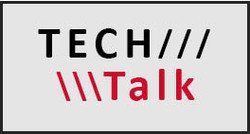 By Jeffrey White
By Jeffrey White
Verifiable training is a critical aspect of creating consistency within a company, as well as protecting the company, employee and customer if a lawsuit should arise in the future. A training process that can be documented at every step will reduce mistakes when services are rendered, reduce liabilities associated with poorly delivered service and improve the customer experience. This article will cover the importance of developing service protocols, as well as the basics of implementing a verifiable training process for all employees.
REPLICABLE PROCESSES. Consistency from call to call or service to service is a battle every company fights and a goal of all organizations. Consistent service improves the customer experience and makes communicating expectations as part of the sales and customer service process more accurate. The backbone to consistency and improving the customer experience is creating and properly documenting protocols for all aspects of your company.
CREATING PROTCOLS. In order to implement a verifiable training process and improve your customers’ experiences, you first need to create and properly document all processes within your company (protocols). Protocols make up the backbone of verifiable training and without having a protocol for every process, you will struggle to create a consistent experience for your clients. Whether it’s answering calls, reporting monthly financials or treating for nuisance ants, each task within your company should have a step-by-step process that is captured in written form and stored within company files. The process should be captured in a fashion that can be read and easily understood by all employees in a simple-to-access format. Lastly, any time the document is updated, the date of the most recent version should be captured on the document, along with the employee who updated it.
DECISIONS WITHIN THE PROTOCOL. Allowing employees the ability to make decisions within the protocol has pros and cons that should be considered. One example of such a decision is having four approved cockroach baits that technicians can use during a cockroach service and allowing them to choose which bait they will use. The benefit to allowing decisions to be made are:
- It allows for experienced employees to evaluate a problem and choose the best tool to address the situation.
- It provides a sense of ownership to a task and creates confidence when a problem is solved correctly.
- It allows for problems to be handled in different ways, which can keep tasks more interesting and avoid monotony, which can lead to complacency, disinterest and mistakes.
In this example, it is often recommended that if you are going to allow technicians to make decisions on which bait to use, that the options be similar in effectiveness and have different modes of action or formulations. This way, if a technician makes a decision that may not be best for a given situation there is a fair chance that the decision will not compromise the effectiveness of the service.
On the other hand, there are also negatives to consider when allowing employees to make decisions within a protocol:
- Inexperienced employees often lack the necessary experience to make proper decisions within a protocol.
- Allowing employees to make decisions often requires more frequent quality assurance evaluations to be sure the proper decisions are being made.
- Employees tend to become comfortable with a tool that works for them but overusing that tool, especially with pesticides, can create issues such as resistance (among other complicating factors).
There is no right or wrong answer when debating whether or not to allow employees to make decisions within a protocol. Company owners just need to be aware of the pros and cons presented by each option and make the appropriate decision for their employees.
DOCUMENTATION. Once it is designed, every employee should be provided a copy of the protocol they are to be trained on and allowed a few days to review it prior to the start of training. The protocol that is provided to the employee should be signed by both the trainer and trainee then dated in an effort to document when the employee was supplied with the information. Once the employee has had time to review the protocol, he or she should be trained on it by a manager who has either written it or been trained by the employee who created the protocol.
The training process should be documented in steps and each step should be trained upon. The employee and the trainer should initial next to each step and document the date the training is complete. When the training process is complete, both the trainer and trainee should sign the training form and date it accordingly. All documents should be placed in the employee’s working file for future reference if necessary.
LEGAL RAMIFICATIONS.The intent of the verifiable training process is to create documentation that would protect the company, employee or client in the event that a lawsuit is filed in the future. If a problem persists and a client files a lawsuit claiming the services rendered were ineffective for controlling the issue in a timely fashion, the company can provide documentation that the protocol rendered was consistent with current research and industry recommendations. Another example is if a technician decides to apply pesticides inconsistent with label directions, the company can provide documentation that the technician was trained on their proper use.
The bottom line is that by creating a verifiable training process we can provide consistent services for our clients, improve the customer experience and protect all interested parties from lawsuits if they arise in the future.The author is director of innovation and technical content, Cooper Pest Solutions, Lawrenceville, N.J.
This Tech Talk article was originally published in the October 2016 edition of PCT magazine.
